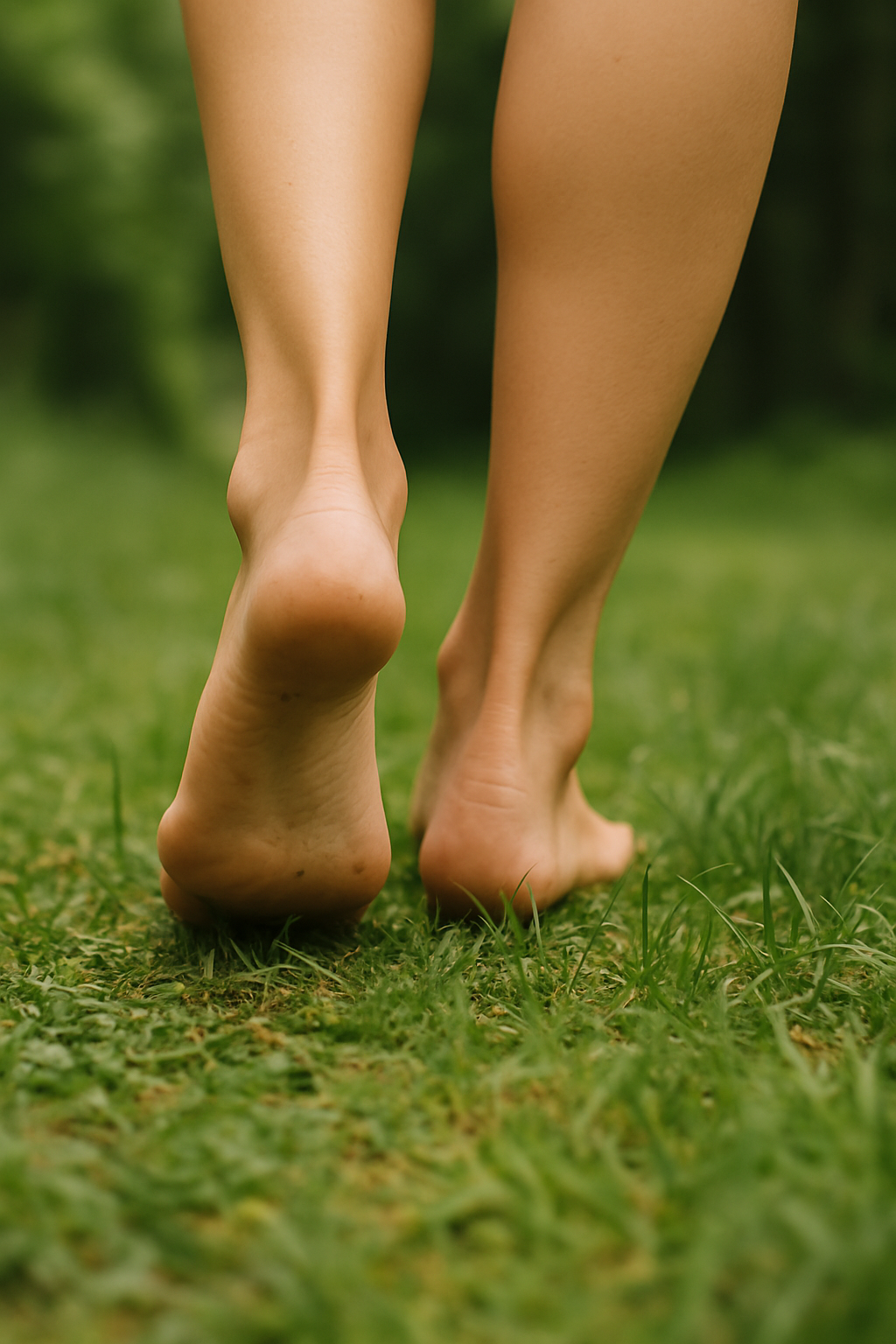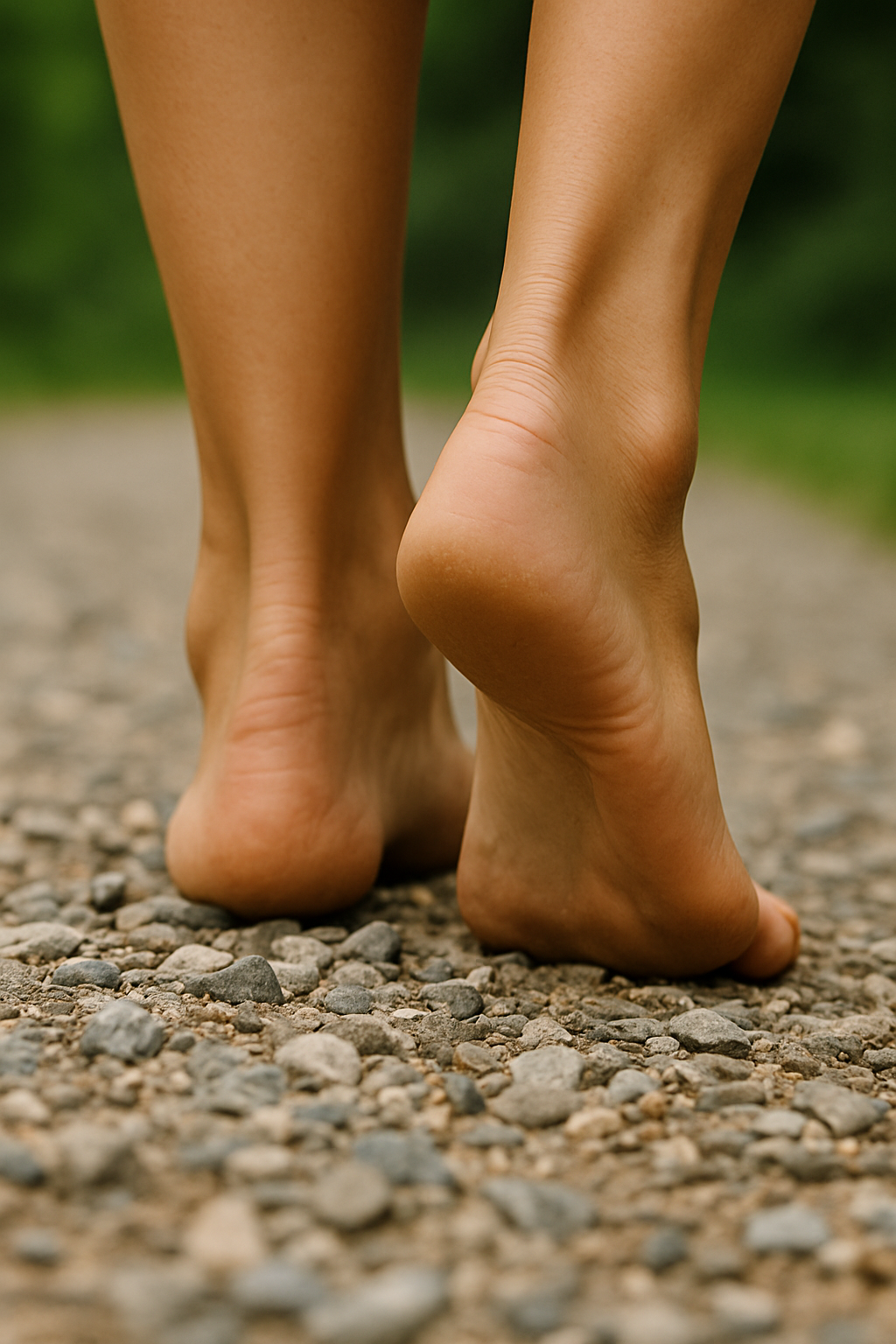Were Humans Meant to Be Barefoot? Barefoot Living FAQ’s Answered
Most of us slip on shoes without thinking twice, but few stop to ask what they’re really doing to our feet and bodies. While shoes protect us from sharp objects and rough terrain, modern designs often come at a hidden cost—narrow toe boxes, elevated heels, and excessive cushioning that weaken muscles, shift posture, and restrict natural movement. Over time, this can lead to common issues like bunions, plantar fasciitis, and even back or knee pain.
Going barefoot, or at least choosing minimalist footwear, helps us return to the way our bodies were designed to move. It strengthens the feet, restores balance, and reconnects us with the ground beneath us. Whether you’re curious about the negatives of shoes, wondering how to safely transition to barefoot living, or just seeking healthier options for yourself and your kids, this guide explores the most common questions people have about shoes—and what happens when you start going without them.
Table of Contents:
What Are the Negatives of Shoes?
Shoes often cause more harm than good—leading to foot deformities, poor posture, back pain, balance issues, and a loss of natural strength. Many common conditions like bunions, hammer toes, and plantar fasciitis are strongly linked to footwear.
Shoes also limit sensory feedback from the ground, which is crucial for balance, coordination, and nervous system health. Overly cushioned soles, narrow toe boxes, and elevated heels all contribute to long-term dysfunction.
When To Stop Using Shoes?
Anytime you can safely go barefoot is a good time to ditch the shoes. Start with low-risk environments like your home, yard, or grassy parks, and gradually expand as your feet adapt. The key is progressive exposure—building strength, calluses, and awareness over time so your body can transition comfortably.
Is It Better For Your Feet To Not Wear Shoes?
Yes—barefoot walking promotes healthier foot mechanics, stronger muscles, better balance, and more natural movement.
Shoes, especially modern ones with arch support and cushioning, tend to weaken and restrict the feet.
Going barefoot helps restore your body’s natural alignment, and even supports better knee, hip, and back health.
What Happens When You Stop Wearing Shoes?
At first, your feet may feel tender as muscles, ligaments, and skin adapt. Over time, they grow stronger, more flexible, and more resilient. Many people notice improved posture, reduced joint pain, and greater agility. It’s common to rediscover the natural spring and grip of your toes once freed from restrictive footwear.
What Is the Common Problem With Shoes?
The most common issue is poor fit. Research shows most people wear the wrong size without realizing it, leading to chronic foot pain, blisters, bunions, and long-term deformities. Even when the size is correct, most shoes are shaped too narrow at the toes—forcing the foot into an unnatural position that can cause permanent damage over time.
Do Humans Really Need Shoes?
Not in the way modern culture suggests.
For most of human history, people walked barefoot or used minimal coverings made of natural materials.
Shoes are primarily a cultural adaptation for protection from extreme conditions or harsh terrain—not a biological necessity.
Are Barefoot Shoes Different From Regular Shoes?
Yes. Barefoot or minimalist shoes are designed to mimic the natural shape and function of the foot. They have a wide toe box, thin flexible sole, and zero heel-to-toe drop, allowing your feet to move and strengthen as if you were barefoot, while still offering a layer of protection.
Can Going Barefoot Improve Posture?
Absolutely. When barefoot, your body naturally aligns with proper biomechanics. Shoes with heels—even small ones—tilt the pelvis, shorten the Achilles tendon, and shift weight forward, leading to misalignment. Barefoot movement encourages a neutral spine and balanced gait.
Is It Safe To Go Barefoot Everywhere?
Not always.
Surfaces with sharp objects, extreme temperatures, or chemicals can cause injury.
It’s best to transition gradually and use minimalist shoes when needed.
With practice, most people find they can safely go barefoot in many more places than they originally thought.
Why Do Children Benefit From Being Barefoot?
Children’s feet are still developing, and barefoot time supports healthy growth, natural arch formation, and proper balance. Restrictive shoes at an early age can alter foot shape permanently and contribute to lifelong issues. Pediatric experts recommend as much barefoot play as possible in safe environments.
Do Shoes Affect Brain Function?
Yes, indirectly. Going barefoot stimulates thousands of nerve endings in the soles of the feet, which provide constant feedback to the brain. This sensory input sharpens balance, spatial awareness, and coordination. Shoes dull that connection, reducing sensory input that supports nervous system health.
The Takeaway
Choosing to go barefoot isn’t about rejecting shoes altogether—it’s about reconnecting with the way our bodies were designed to move.
Research continues to show that freeing the feet can strengthen muscles, improve balance, reduce inflammation, and even enhance cognitive function.
Whether you start small by kicking off your shoes at home, explore minimalist footwear, or enjoy barefoot walks in nature, each step is an opportunity to restore natural alignment and support whole-body health.
Scientific Research
I recently put together a full post dedicated to the science behind barefoot living and grounding. It includes every credible study I’ve come across over the years — all in one place.




